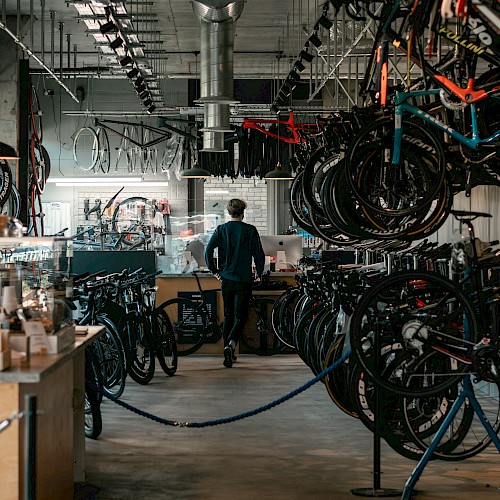The Future of Bicycle Inspection: Part 3

When first introducing our damage assessment solution to bicycle retailers and workshops, we often ask them if they had previously considered offering standardised bike inspections as part of their service/workshop offering. Interestingly, of those that require some convincing, the responses fall into one or more of the following categories:
- We don’t see many damaged bikes coming to us.
- We have our own method.
- We send it to someone else if we notice a crack.
- This seems important for warranty claims, but we want to remain neutral.
Missed our previous posts? click here to read part 1 (prevention vs reaction), and click here to read part 2 (pre-purchase/pre-sale).
This blog series now continues with the importance of skilled intervention by accredited technicians in the instance where impact damage has been sustained.
Part 3: post-impact inspection
The most common and obvious justification for inspection that which occurs after impact (crash, drop, bump) has occurred. As mentioned in previous posts in this series, due to the previous lack of access to local technicians we know many cyclists (almost 1 in 2) do not have their bicycle inspected properly even after a known incident due to the anticipated costs and effort in having their bicycle 'stripped and shipped'. Unfortunately, it seems that inspections are only pursued if the incident has resulted in significant damage that can be clearly seen. What is deemed ‘significant’ is clearly subjective, which highlights two important points:
Bicycle mechanics, as the trusted ally of any bike owner, serve a critical function to call out issues when they see them. The duty of care is clear, but currently cannot be responsibly enforced without the proper training and technology.
The notion of ‘subjectivity’ and inconsistent methods in damage inspections is worrisome, and Cycle Inspect’s standardised training and procedure ensure every technician is operating from the same rule book when the assessment is complete.
We envision that, for example, when crashes occur at a race event, a technician would ideally be available on-site to provide a standardised inspection prior to the cyclist completing their next trial or race run. Likewise, recreational riders who experience a known incident (an incident resulting in a suspected impact), should have their bicycle checked by an accredited technician for piece of mind, and to action longitudinal monitoring or repair/replacement if needed.
Clearly, it is our philosophy that more technicians create a more accessible market for cyclists and a more competitive market for retailers or sole traders intent on providing a sophisticated and holistic service to their customers. In short, everybody wins by removing barriers and improving cyclist safety.
Further, the standardisation of processes and technologies can help to improve awareness of, and confidence in, the methods across the industry.

Stay informed
Sign up to our mailing list to hear all of our latest news, offers and announcements.